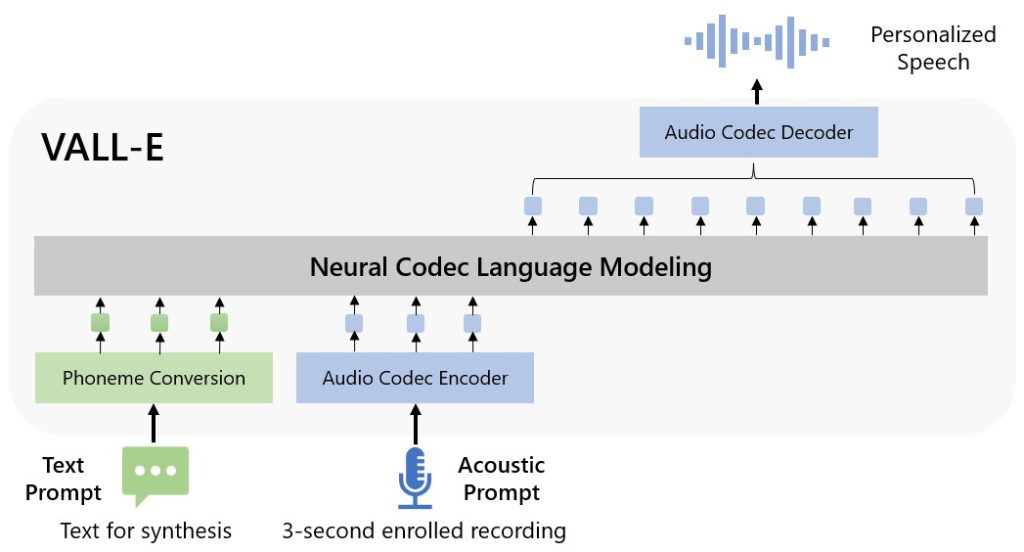
Are you weary of synthetic-sounding text-to-speech applications? Well, Microsoft brings exciting news! They’ve introduced VALL-E, an AI model capable of closely replicating someone’s voice with just a brief three-second audio snippet. This innovation not only reproduces a person’s voice but also endeavors to retain the speaker’s emotional nuances.
The potential applications for VALL-E are vast, spanning from high-fidelity text-to-speech tools to speech editing and audio content creation, especially when coupled with other AI models like GPT-3 and ChatGPT. Termed a “neural codec language model” by Microsoft, VALL-E is built upon EnCodec technology, initially unveiled by Meta in October 2022.
Unlike conventional text-to-speech approaches relying on waveform manipulation, VALL-E generates discrete audio codec codes using textual and acoustic cues. It dissects a person’s vocal characteristics, breaks them down into distinct components, and leverages training data to replicate how that voice would sound when speaking more than the initial three-second excerpt.

The outcomes from this groundbreaking technology are varied, presenting a range from machine-like quality in some samples to others that are nearly indistinguishable from a genuine human voice. To experience these samples firsthand, you can listen on the VALL-E research page: https://valle-demo.github.io/. Its ability to retain the emotional essence of the original samples distinguishes it from prior text-to-speech models. Additionally, VALL-E accurately replicates the acoustic setting, ensuring that if the speaker initially recorded in an echo-filled hall, the VALL-E output mirrors that environment.
Microsoft aims to refine the model further by expanding its training dataset and finding methods to minimize unclear or omitted words. While VALL-E may pose a challenge to voice actors and narrators, it also introduces a novel dimension of personalization and emotional connection, particularly for individuals seeking to preserve the voice of a loved one. Acknowledging the potential implications of this technology on unidentified speakers, the Microsoft VALL-E team has included an ethics statement on their demo page. They emphasize the necessity of obtaining consent from the speaker for any modifications and implementing systems to identify altered speech.
The landscape of AI continually progresses, and VALL-E represents the latest instance of technology bridging the gap between past and present. It introduces an unprecedented level of text-to-speech functionality that was previously unattainable. The future advancements and applications of this technology are highly anticipated!